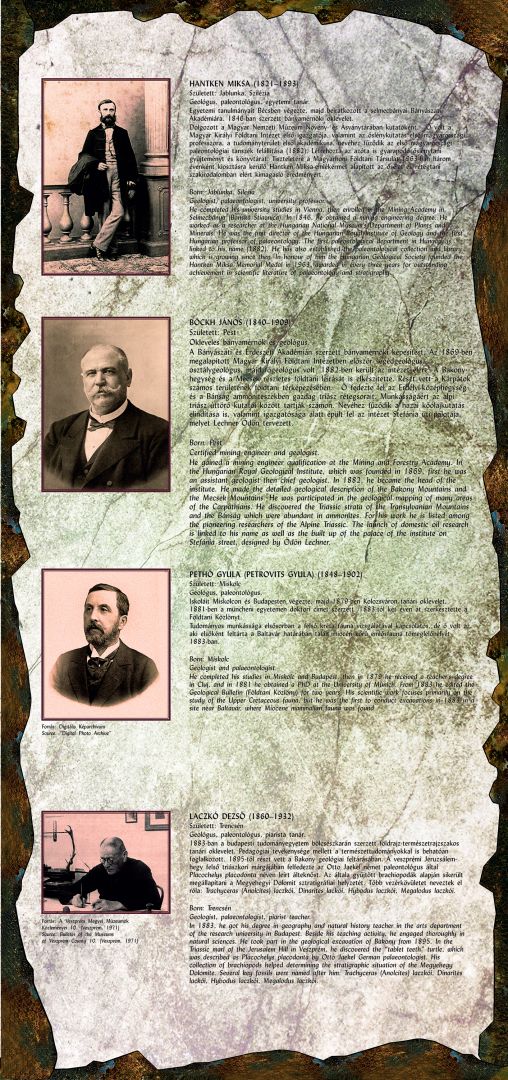HUGARIAN DINOSAUR RESEARCH
Hungarian researchers
HANTKEN MIKSA (1821–1893)
Born: Jablunka, Silesia
Geologist, palaeontologist, university professor.
He completed his university studies in Vienna, then enrolled in the Mining Academy in Selmecbánya (Banská Štiavnica). In 1846, he obtained a mining engineering degree. He worked as a researcher at the Hungarian National Museum's Department of Plants and Minerals. He was the first director of the Hungarian Royal Institute of Geology and the first Hungarian professor of palaeontology. The first paleontological department in Hungary is linked to his name (1882). He has also established the paleontological collection and library which is growing since then. In honour of him the Hungarian Geological Society founded the Hantken Miksa Memorial Medal in 1963, awarded in every three years for outstanding achievement in scientific literature of palaeontology and stratigraphy.
BÖCKH JÁNOS (1840–1909)
Born: Pest
Certified mining engineer and geologist.
He gained a mining engineer qualification at the Mining and Forestry Academy. In the Hungarian Royal Geological Institute, which was founded in 1869, first he was an assistant geologist then chief geologist. In 1882, he became the head of the institute. He made the detailed geological description of the Bakony Mountains and the Mecsek Mountains. He was participated in the geological mapping of many areas of the Carpathians. He discovered the Triassic strata of the Transylvanian Mountains and the Bánság which were abundant in ammonites. For his work he is listed among the pioneering researchers of the Alpine Triassic. The launch of domestic oil research is linked to his name as well as the built up of the palace of the institute on Stefánia street, designed by Ödön Lechner.
PETHŐ GYULA (PETROVITS GYULA) (1848–1902)
Born: Miskolc
Geologist and palaeontologist.
He completed his studies in Miskolc and Budapest, then in 1879 he received a teacher’s degree in Cluj, and in 1881 he obtained a PhD at the University of Munich. From 1883 he edited the Geological Bulletin (Földtani Közlöny) for two years. His scientific work focuses primarily on the study of the Upper Cretaceous fauna, but he was the first to conduct excavations in 1883 in a site near Baltavár, where Miocene mammalian fauna was found.
Source: “Digital Photo Archive”
LACZKÓ DEZSŐ (1860-1932)
Born: Trencsén
Geologist, palaeontologist, piarist teacher.
In 1883, he got his degree in geography and natural history teacher in the arts department of the research university in Budapest. Beside his teaching activity, he engaged thoroughly in natural sciences. He took part in the geological excavation of Bakony from 1895. In the Triassic marl of the Jerusalem Hill in Veszprém, he discovered the “tablet teeth” turtle, which was described as Placochelys placodonta by Otto Jaekel German palaeontologist. His collection of brachiopods helped determining the stratigraphic situation of the Megyehegy Dolomite. Several key fossils were named after him: Trachyceras (Anolcites) laczkói, Dinarites lackói, Hybodus laczkói, Megalodus laczkói.
Source: Bulletin of the Museums of Veszprém County 10. (Veszprém, 1971)
